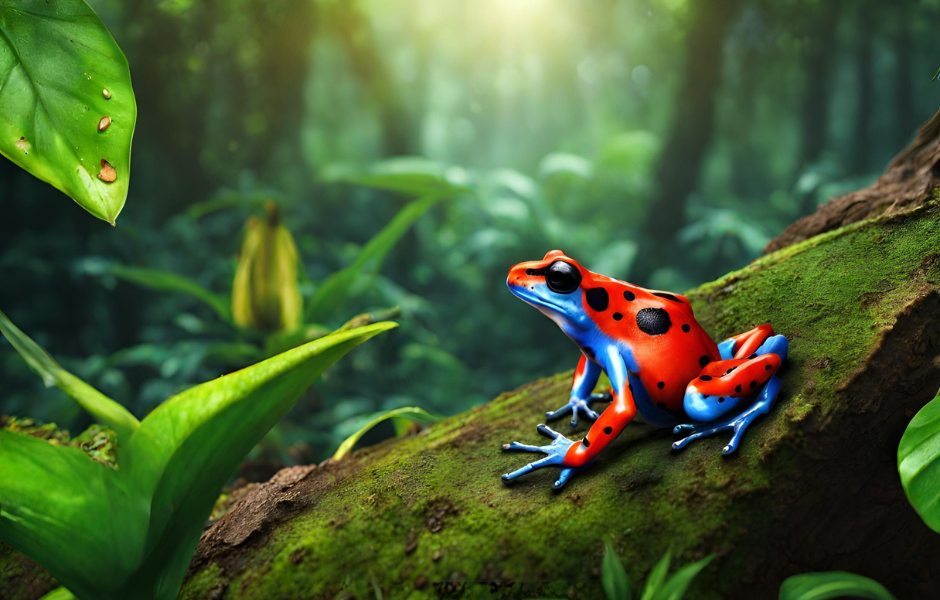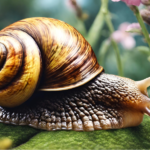
It is hard to imagine something so small to be poisonous but that is poison dart frogs for you! Despite their small size and toxicity, they do have a role to play to maintain balance in the rainforest ecosystem. Poison dart frogs are a colorful species of amphibians which are found in Central and South America. While their colors may look pretty and bright to humans but they serve to deter predators in the wild. These frogs come in a variety of colors that include blue, red, and yellow which makes them fascinating creatures and ideal toy figurines for kids.
Schleich Poison Dart Frog Toy Figurine

#CommissionsEarned
The features of the Schleich Poison Dart Frog Toy Figurine include:
- Authentic design
- Beautiful details
- Suitable for children aged 3 to 8
- Measures about 2.2 x 2.0 x 1.3 inch
10 Interesting Facts About Poison Dart Frog
- Poison dart frogs are some of the most brightly colored animals in the world with vibrant hues ranging from bright red and orange to electric blue and green.
- These frogs are tiny with most species measuring less than one inch in length.
- Despite their small size, poison dart frogs are incredibly toxic. The skin of some species contains enough toxin to kill 10 adult humans.
- Their toxin comes from the insects they eat which are then stored in their skin.
- The poison dart frog’s toxin is so potent that some South American tribes have used it to coat blow darts for hunting.
- There are over 170 species of poison dart frogs and all are native to Central and South America.
- They excellent climbers and can often be found high up in the trees.
- Poison dart frogs have few natural predators as most animals have learned to avoid them.
- They are very territorial and will defend their territory aggressively.
- Some species have been known to form strong bonds as a pair and will stay together for life.
Why Are Poison Dart Frogs So Poisonous?
What is interesting is that diet plays a part in the potency of a poison dart frog’s toxin. Their toxicity comes from the animals and insects they eat which include ants, beetles, and termites. These foods contain alkaloids which are then store in their skin which makes them poisonous. Thus, this is why poison dart frogs that are kept in captivity are less toxic than the wild ones in general. Of course, apart from diet, the toxicity level may also differ among the different species. Some of them can be fatal even for humans, once the toxin enters the bloodstream through an open wound or accidentally ingested. The side effects include convulsions and paralysis and in the worst case scenario, death.
The most poisonous of all is the golden poison dart frog which is native to the rainforests of Colombia. Its potency is so strong that the poison on its skin is sufficient to kill 2 African bull elephants. Few can beat it as one of the most toxic animals in the world.
Basically, the creatures’ brightly colored and poisonous skin serve as a warning to potential predators to stay away. They are not naturally aggressive and only become dangerous when they feel threatened or are handled improperly. So, don’t touch them no matter how beautiful they look as it is better to be safe than sorry.
Predators
Who eats poison dart frogs when they are toxic? While most animals stay away from them, there are still some predators that have developed ways to overcome the creature’s defenses. Certain species of snakes, particularly those in the genus Leimadophis, are one of their main predators. These snakes have developed a resistance to the toxins in the frog’s skin, and are able to prey on them with relative impunity.
Another predator of poison dart frogs are some species of birds, such as the tinamou. Not only they are able to eat them without being affected by their toxins, they may even use the frogs’ toxicity to their advantage by rubbing the toxins on their own feathers as a form of protection against parasites.
Finally, some species of ants have been known to prey on poison dart frog eggs and tadpoles. These ants are able to neutralize the toxins in the eggs and tadpoles by using formic acid which they produce in their bodies.
Despite the presence of these predators, poison dart frogs have managed to survive and thrive in their native habitats. Their small size and agility make them difficult to catch apart from their appearance and toxins which help to ward off most potential enemies.
Prey
Poison dart frogs prey on other animals which means that they are carnivorous. Their diet mainly consists of small insects and other invertebrates such as ants, beetles, and termites. To catch their prey, they use their long, sticky tongues to capture them.
Once the prey is caught, the frog will use its front legs to push the food into its mouth. Unlike humans, poison dart frogs do not have teeth to chew their food. Instead, they swallow their prey whole. They have a unique digestive system that allows them to extract as much nutrition as possible from their food. Despite their small size, they are efficient hunters that are able to extract all the nutrients they need from their prey.
Size
Yes, poison dart frogs are small animals. Their size varies depending on the species. The smallest species, the Strawberry Poison Dart Frog, grows to be only about 0.75 inches long while the largest species, the Phantasmal Poison Frog, can grow up to 2.4 inches long. The bigger species can weigh up to 1 oz.

#CommissionsEarned



Leave a Reply